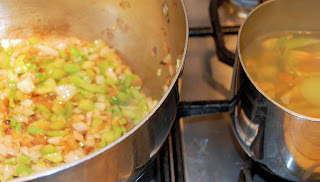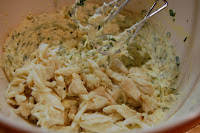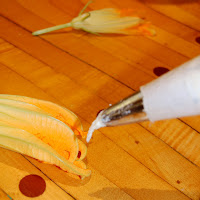However, many people are unaware how good they can actually be for us. Tomatoes are low in calories and packed with health-promoting nutrients such as vitamins A and C, potassium and the super anti-oxidant called lycopene. Lycopene is a carotenoid that supports heart health by reducing the tendency of blood to form clots and promotes healthy cholesterol levels. It's also been found to be a potent hedge against many kinds of cancer. Tomatoes are so incredibly versatile making them crazy easy to incorporate into almost any meal. Here are our top ten:
 1. Toss them: Simply toss fresh cherry tomatoes in a salad with fresh crisp lettuces and toss with your favorite dressing. Or, set a pot of water on the stove to cook pasta and place a sauté pan over medium heat. Toss cherry tomatoes in the pan and allow them to slowing cook until they “melt.” Add torn basil, a crushed garlic clove, salt and coarsely ground black pepper and simmer until pasta is cooked and drained. Pour this simple sauce over the pasta and toss. Don’t forget the grated Parmesan cheese.
1. Toss them: Simply toss fresh cherry tomatoes in a salad with fresh crisp lettuces and toss with your favorite dressing. Or, set a pot of water on the stove to cook pasta and place a sauté pan over medium heat. Toss cherry tomatoes in the pan and allow them to slowing cook until they “melt.” Add torn basil, a crushed garlic clove, salt and coarsely ground black pepper and simmer until pasta is cooked and drained. Pour this simple sauce over the pasta and toss. Don’t forget the grated Parmesan cheese.2. Slice them: There are few things better on the entire planet than a fresh caprese salad! Freshly sliced tomatoes layered with fresh mozzarella and just-picked basil leaves; nirvana. Lactose intolerant? No worries… try a Japanese chilled tofu dish called hi-yayakko. Alternate slices of tomato and best-quality sliced tofu, firm or soft. Make a dressing of olive oil, soy sauce, seasoned rice wine vinegar, ginger, garlic and a touch of sugar to taste then top with slivered green onions.
 3. Chop them: Coarsely chop tomatoes into a mixing bowl, salt them well with about one full pinch per cup and let them macerate for 20 minutes. If you don’t care about seeds and skins, you will end up with firmer, more flavorful tomato dice and a lot of delicious juice waiting to saturate any ingredients you mix with the tomatoes. Add a bit of garlic and fresh herbs and, Presto! – Bruschetta!
3. Chop them: Coarsely chop tomatoes into a mixing bowl, salt them well with about one full pinch per cup and let them macerate for 20 minutes. If you don’t care about seeds and skins, you will end up with firmer, more flavorful tomato dice and a lot of delicious juice waiting to saturate any ingredients you mix with the tomatoes. Add a bit of garlic and fresh herbs and, Presto! – Bruschetta!4. Grate them: This is my favorite tomato trick of all time. Cut the tomato in half through the equator, pluck out the seeds with your fingers and grate the cut side against the large holes in a box grater set over a bowl. You will end up with a bowlful of gorgeous tomato flesh and a naked skin in your palm within seconds. What do you do with it? I like to keep going with other vegetables and grate cucumbers, peppers and a little onion for a quick, coarse-textured gazpacho that you season with oil, vinegar, salt and fresh herbs.
5. Strain them: Blanch four large tomatoes in boiling water to easily remove skins. Once cooled and peeled, coarsely chop tomatoes in a food processor with a couple of teaspoons of salt. Pour into the chopped tomatoes over several thicknesses of folded cheesecloth in a sieve and drain the excess liquid from the pulp (reserving the liquid.) Use the pulp to make a quick tomato sauce for pizza, pasta or meatloaf. If you’re an epicurean, use the reserved tomato water in a refreshing agua fresca or to make an amazing tomato martini.
6. Juice them: Blanch the tomatoes as above and pureed the peeled tomatoes in a food processor along with a rib of celery, several mini peeled carrots and a bit of chopped onion. Heat the juice until just boiling in a sauce pan and simmer for about 20 minutes. Season the juice with a pinch of sugar and salt to taste. If you prefer a smoother juice, you can strain the puree through a sieve before using it to make the best Bloody Mary ever!
7. Cream them: Start by sautéing a chopped onion in butter in a pot. Add a couple of cloves of minced garlic and four to five big tomatoes that have been chopped. Add a spoonful of tomato paste and three to four cups of chicken or vegetable stock. Add two spoonfuls of raw rice. Bring to a boil and simmer for 20 minutes, until rice is cooked. Puree in the blender, strain the skins through a sieve and reheat in a saucepan with salt, pepper and a healthy glug of cream or half-and-half. Serve this amazing tomato bisque with garlic bread or a classic grilled cheese sandwich.
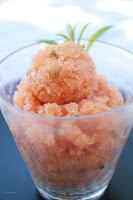 8. Freeze them: Remember that tomato pulp from above? Good, now throw four cups of it into the blender with a half cup of cilantro leaves, the juice of a couple of limes and a squirt of your favorite hot sauce. Pour the resulting goop over a cookie sheet and place it in the freezer. Every 20 minutes or so, scrape the frozen edges to the center of the pan with a fork. When you have nothing but red flakes of crystallized ice, you have spicy tomato granita. Place in a covered container and freeze until ready to eat. This makes an fancy and unexpected appetizer or dessert.
8. Freeze them: Remember that tomato pulp from above? Good, now throw four cups of it into the blender with a half cup of cilantro leaves, the juice of a couple of limes and a squirt of your favorite hot sauce. Pour the resulting goop over a cookie sheet and place it in the freezer. Every 20 minutes or so, scrape the frozen edges to the center of the pan with a fork. When you have nothing but red flakes of crystallized ice, you have spicy tomato granita. Place in a covered container and freeze until ready to eat. This makes an fancy and unexpected appetizer or dessert.9. Roast them: Cut the tomatoes in half through the equator and place cut side up in a 13-by-9-inch baking pan. Sprinkle the top with chopped garlic and any herbs you like along with salt and a generous drizzle of olive oil. Bake at 325 degrees F for about two hours, watching to make sure they’re not drying out too quickly. If they’re still very juicy, turn up the heat to 400 and cook for a few more minutes until the juices start to caramelize. Pull the skins off with your fingers and use them as is or mash with a spoon to a nice tomato paste consistency before using.
 10. Preserve them: Just like the many other fruits of summer, tomatoes make a wonderful jam. Combine about a pound and a half of good ripe tomatoes (coarsely chopped), one jalapeno or other pepper that has been stemmed, seeded and minced, a cup of sugar, juice of two limes, a tablespoon of grated ginger, a teaspoon of salt and of ground cumin, a big pinch of cinnamon and a small pinch of ground cloves in a large saucepan. Bring to a boil over medium heat, stirring often. Reduce the heat and simmer, stirring occasionally, about 1 hour 15 minutes until mixture has consistency of thick jam, Taste and adjust seasoning, and then cool and refrigerate until ready to use; this will keep at least a week. This jam can be canning and processed in a water bath and preserved for months.
10. Preserve them: Just like the many other fruits of summer, tomatoes make a wonderful jam. Combine about a pound and a half of good ripe tomatoes (coarsely chopped), one jalapeno or other pepper that has been stemmed, seeded and minced, a cup of sugar, juice of two limes, a tablespoon of grated ginger, a teaspoon of salt and of ground cumin, a big pinch of cinnamon and a small pinch of ground cloves in a large saucepan. Bring to a boil over medium heat, stirring often. Reduce the heat and simmer, stirring occasionally, about 1 hour 15 minutes until mixture has consistency of thick jam, Taste and adjust seasoning, and then cool and refrigerate until ready to use; this will keep at least a week. This jam can be canning and processed in a water bath and preserved for months.While there are few pleasures more sincere than a freshly-picked, vine-ripened tomato, for many of us a garden is simply not feasible, and the grocery store offerings are less than optimal. That is the time to open a can of Red Gold tomatoes. Red Gold has been around since the 1940s focused on growing local in the Midwest, where true seasons positively impact the flavor of tomatoes. The Midwest, while it's cold in the winter, has the perfect growing season for tomatoes, perfect angle of the sun, perfect temps; even the winters are good for tomatoes, as they break up the soil for tiny root systems.
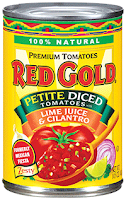 Red Gold is celebrating tomato season with a Summertime Grillin' Party which is now live on Facebook. They are giving away 1,000 aprons each week for five weeks leading up to a grand-prize drawing for a Green Egg Ceramic Grill & Smoker. The sweepstakes and ends Aug. 30th. To enter: click on the Grillin' Party image that's posted on their Facebook header. The direct link is: https://www.facebook.com/RedGold/app_349542138512669.
Red Gold is celebrating tomato season with a Summertime Grillin' Party which is now live on Facebook. They are giving away 1,000 aprons each week for five weeks leading up to a grand-prize drawing for a Green Egg Ceramic Grill & Smoker. The sweepstakes and ends Aug. 30th. To enter: click on the Grillin' Party image that's posted on their Facebook header. The direct link is: https://www.facebook.com/RedGold/app_349542138512669.But wait!! It gets even better! Red Gold is giving us an opportunity to celebrate summer grilling with our readers as well! We are hosting a give-away of a Red Gold Summer Gift Pack with Red Gold Tomatoes with Green Chilies, Red Gold Lime Juice & Cilantro, Red Gold Ketchup, Coupons for other Red Gold products and recipes for Spicy Tomato Burgers and Caribbean Chicken Burgers. They are providing the gift pack and shipping it directly to the winner.
Enter today and remember to head over to the Red Gold Facebook page for a chance to win a Red Gold apron or the Big Green Egg Grand Prize!

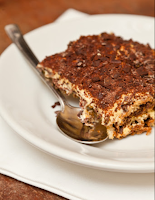




 We are not sure about your house, but in ours it just is not summer without ice cream. Now you can even start the day with it!
We are not sure about your house, but in ours it just is not summer without ice cream. Now you can even start the day with it!  Prepare the tea by adding tea bags to the boiling water and allowing to steep for 4 minutes before removing the tea bag(s) from the cup. Add the sugar and stir to dissolve. Let the tea cool completely or overnight in the refrigerator.
Prepare the tea by adding tea bags to the boiling water and allowing to steep for 4 minutes before removing the tea bag(s) from the cup. Add the sugar and stir to dissolve. Let the tea cool completely or overnight in the refrigerator.
